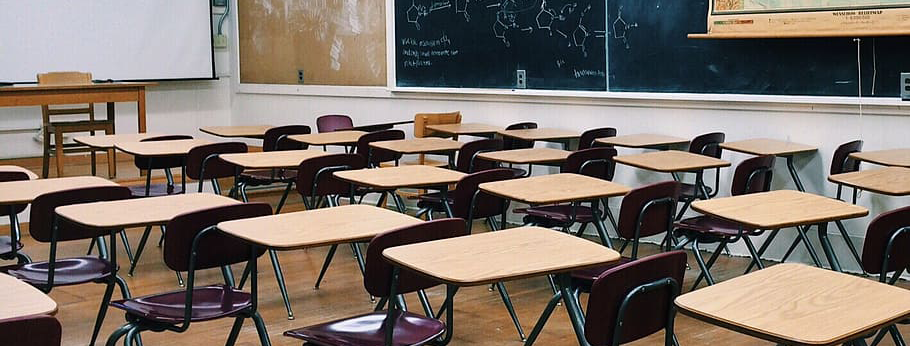
Learning Objective: To provide some suggestions on what to consider as part of your schools re-opening plans during and post the COVID-19 pandemic.
Many School Divisions are meeting to examine how they can safely re-open their schools now that the Governments and Provincial Health Authorities have given their approval. In discussions with many of you and information we’ve gathered from other areas throughout Canada and around the world, we thought it was timely to provide you some of the ideas being considered.
Ultimately, everyone wants to ensure our schools are safe for staff and students while at the same time providing an effective environment for students to learn. As such, balancing this will be the challenge that School Divisions will encounter as they navigate the various requirements.
Things to consider:
- Thorough cleaning of all schools prior to student’s arrival.
- Hand sanitizers located at all key entry points and common areas throughout school.
- Constant promotion of proper hand washing for all staff and students.
- Regular screening of students/staff for temperature, and COVID-19 related symptoms. If symptoms present, Isolate until such time as they can be picked up by a parent/care giver.
- Staggered arrival/departure times. Different grades starting and being dismissed at different times.
- Staff/students splitting their instructional days where a portion will be instructed in classrooms and a portion via home based learning.
- Implementing alternate days/weeks where students will attend school and learn from home.
- Smaller number of students on buses (supports the staggered start time’s scenario).
- Smaller number of students in classrooms to maintain required physical distancing of 2m.
- Process in place within hallways, stairs, and other common areas to ensure proper distancing is maintained, ie. one staircase designated for down only and one designated for students going up.
- More emphasis on distance learning. Some Divisions are considering certain grades will be taught through distance learning programs versus in schools. This will provide some relief on the challenges associated with classroom loads in many schools.
- Re-purposing single use rooms such as libraries, cafeterias, gyms into multi-purpose areas where lessons can take place.
- Using outdoor learning when weather & systems permit. Use of sports field surrounding schools as outdoor classrooms.
- Looking to rent alternate facilities to use for instruction.
- Redrawing of school boundaries to take advantage of underused facilities.
- Availability of applicable PPE for staff and/or student use.
- Removal/decommissioning water fountains.
- Installation of Water Bottle filling stations.
- Restricting visitors to schools – applicable sign in/out sheets should now be mandatory in all schools.
- Parents restricted from entering schools during drop-off and pick-up times.
- Frequent cleaning of all common and high touch areas.
- Look at the merits of installing automated systems such as lights, and doors to limit contamination of high touch areas.
- Policies for to avoid sharing of school supplies, food, etc.
- Meal service – proper Provincial Food Safety training should be mandatory for all staff involved in this area including the use of PPE. How food is provided to students is also being reviewed – delivered to student versus buffet style lines. Ways to continue with meal programs in schools is critical for many of the students well being.
- Removal of microwaves from common areas, and classrooms; used only by Food Safety trained staff.
- Physical activities – sports like basketball, football, volleyball, baseball, etc. pose some unique challenges given the student is required to touch the ball, whereas sports such as soccer, lacrosse, golf, track events (without relay batons, javelin, shot put) and hockey are such where the participant doesn’t touch (skin contact) the ball/puck on a regular basis.
Flexibility:
- The need for flexibility in adapting to the temporary requirements is critical as we make our way through these challenging times.
- Now, more than ever, regular documented inspections should be provided and maintained for all areas within a school including the mandatory sign-in and sign-out logs for all staff and visitors.
Final Thoughts:
Throughout your planning process, there needs to be an ongoing analysis on primarily three areas when reviewing your re-opening plans:
- The physical – actual brick and mortar requirements. Reconfiguration of learning spaces, installation/removal of equipment, safety devices, etc. What are the technology requirements for laptops, internet connections, etc.? What are the transportation needs for our students?
- The Human element – the affects these plans will have on staff and students. Everything from staffing levels, the ability to work remotely to the mental challenges the reopening may have on staff and students will require continual monitoring and support.
- Financial Impact – Some of these changes will require significant capital expenditures. There should be open discussions with all stakeholders (internal and external) in order to the meet the needs.
While this information is specific for school divisions, these considerations could be applied anywhere.
For additional information, contact:
Doug Taylor, CRM, CCPI
Managing Director, Risk Management Group
doug.taylor@suncorpvaluations.com
